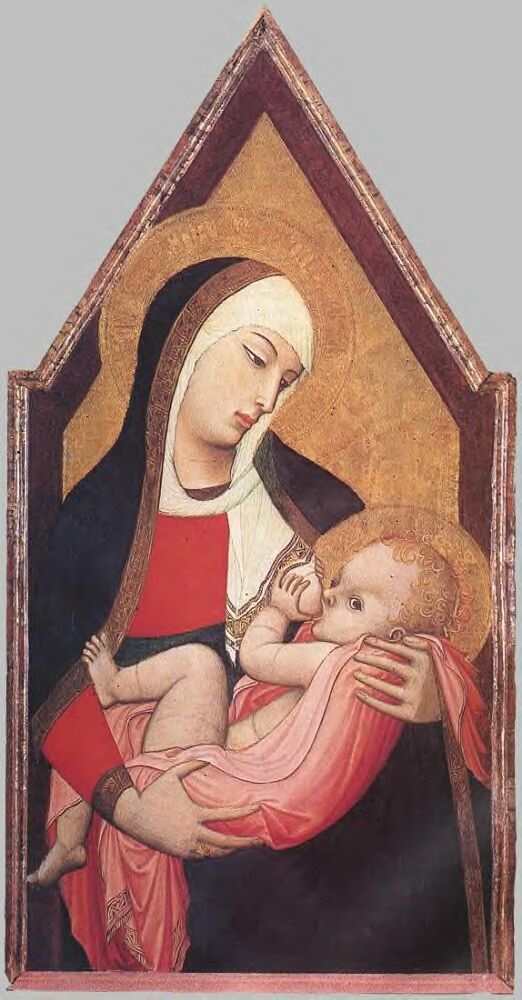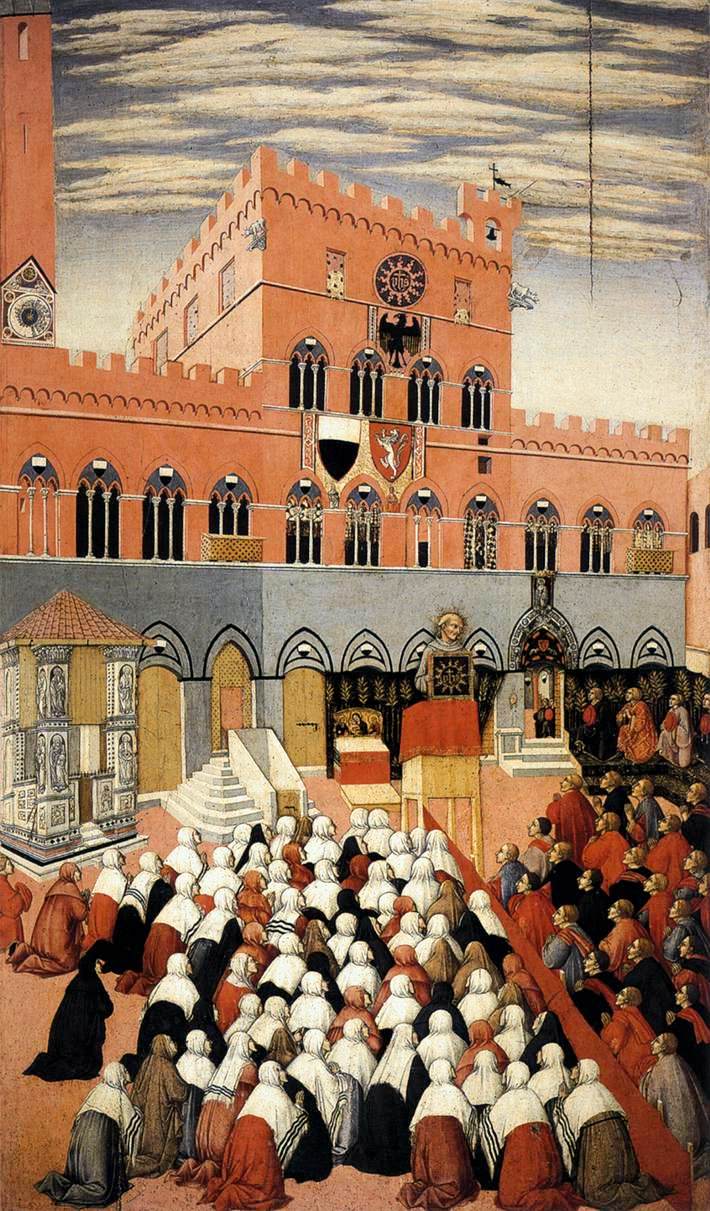
I really enjoyed the museums in Siena in part because they were small enough to manage with children, and not so packed. But the best part was their troves of early Renaissance art. I like the early stuff because it’s not so all-fired perfect like the late Renaissance art. During the early period, artists had figured out a few things about perspective, but they hadn’t yet cracked the whole code.
The art from the early period also seems brighter and more colorful than the later Renaissance. I find myself relating to it because it’s more like what I’d want to create myself. Perfection in artwork doesn’t really interest me that much, probably because I’m living after the invention of photography. So the beautiful but imperfect early Renaissance paintings (as well as pre-Renaissance works) have an almost modern feel to me.
Disclaimer: this isn’t an all that scholarly perspective, so bear that in mind.

St. Bernardino Preaching, by Sano di Pietro (above)—This scene takes place in the same Piazza del Campo from my previous post. I couldn’t find a better image of it, but in real life the colors are much brighter. The building behind St. Bernardino is the color of papaya flesh.
(detail from The Siege of the Castle of Montemassi, by Simone Martini)
The image above is just a tiny bit of a beautiful and famous painting. You can see the artist has made an attempt to show the dimensionality of the castle, but it’s still a bit flat, with an almost cubist feeling. I love it.
Our favorite pieces in the museum were the nursing Madonnas. I had never seen anything like them and was so moved by their tenderness. Whoever thought of Mary breastfeeding Jesus? Evidently plenty of artists have, but I hadn’t. I found the images so intimate, so human. So different from some other Madonnas where she’s looking away from baby Jesus, holding him like she’s not sure whose kid this is but would someone please take him?
Evidently there are a lot of these lactating Madonnas from 14th century Tuscany. According to Wikipedia, they were “something of a visual revolution for the theology of the time, compared to the Queen of Heaven depictions.”

Madonna del latte, Paolo di Giovanni Fei
“During the Council of Trent in the mid-16th century, a decree against nudity was issued, and the use of the Madonna Lactans iconography began to fade away.”
Sigh. At least they didn’t burn them.
The coolest thing about seeing these paintings was how much my small children responded to them. I think the idea of baby Jesus being so like themselves, so like oth



